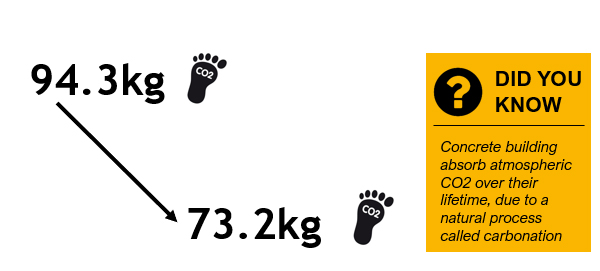1. Carbon
Insight #1: Carbon

SPECIFYING FLY
ASH OR GGBS
CAN REDUCE THE
EMBODIED CO2
OF A REINFORCED
CONCRETE FLAT
SLAB BY
35%
Carbon emissions is a simplified popular term for greenhouse gas emissions, a contributor to climate change. The concrete industry has made sector carbon-reduction commitments as part of the Climate Change Act, which legally commits the UK to meeting challenging reductions to emissions: a 34% fall by 2020 and 80% by 2050, based on 1990 levels.(This has since been superseded by the Government target of net zero by 2050).
The inherent performance of concrete means that it can contribute to reducing the carbon emissions of the built environment. The built environment is a significant contributor to carbon emissions, predominantly through energy use for heating, lighting and electrical goods. The construction industry therefore has an important role to play in upgrading existing buildings and ensuring that future buildings are more carbon efficient.
The concrete industry, via The Concrete Centre, provides designers with robust, detailed information on how carbon emissions from buildings can be reduced. It also provides guidance on reducing the embodied carbon
of concrete through specification.

Read the Insight #1: Carbon article including:
- Embodied and whole-life carbon, by Tom De Saulles
- Decarbonising cement, by Richard Leese
Find out the latest update on the Carbon performance indicator